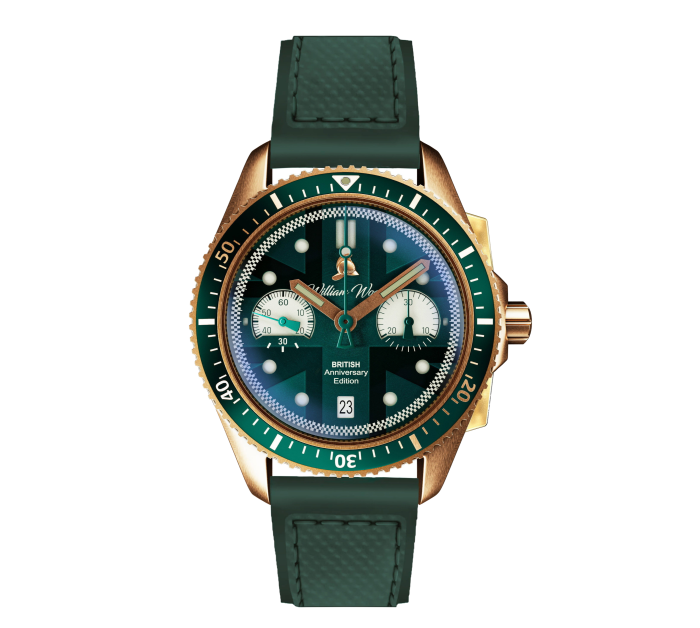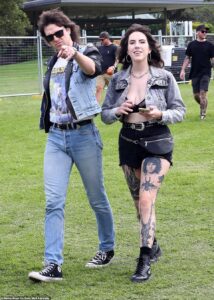
The coronation of Queen Elizabeth II in 1953 was a “complete game changer” for jeweller Deakin & Francis: its commemorative silver jam spoons, butter knives and teaspoons flew off the shelves. “Sales were enormous,” says managing director Henry Deakin. “We built part of the factory [in Birmingham] on the back of it.”
Seventy years on, the company now best known for its cufflinks is among the British watch and jewellery brands creating pieces to mark the coronation of the UK’s newest monarch. Whether it can replicate its previous success remains to be seen. But Fflur Roberts, head of luxury goods at market research provider Euromonitor International, says big royal events do boost sales.
As well as more footfall from tourists increasing sales in London, she says a collective celebration makes people feel positive. “It’s very much a feeling of coming together and that builds consumer confidence, so people might be more willing to spend, or it might be that they’re inspired by all of the jewels that they will see during the coronation and . . . be encouraged to buy jewellery,” she says.
King Charles III will be crowned with St Edward’s Crown at Westminster Abbey, London on May 6. The crown, made for Charles II in 1661, features on the official coronation emblem created by Sir Jony Ive, former chief design officer at Apple, with its shape formed by flowers representing the four nations of the UK.


Deakin & Francis has used this emblem for one of its eight designs for sterling silver commemorative cufflinks. A temporary relaxation of rules governing the commercial use of royal arms and devices allows for their use on coronation souvenirs. A further six of the jeweller’s designs feature the King’s cipher, while another pair carries a miniature 3D version of the crown. “King Charles has regularly worn our cufflinks so it’s an obvious link,” says Deakin.
He says the event is “good brand recognition” for British companies. “‘Made in England’ is getting stronger and stronger, and what a perfect way to celebrate it with the coronation.”
Annoushka has taken inspiration from the crown for an 18-carat and white gold bejewelled charm, limited to 100 pieces, being released on April 5. The jewels will bear the King Charles III coronation hallmark, depicting the monarch’s head in profile, an optional mark launched this month that can be requested on items hallmarked in the UK until the end of 2024.

“There’s always extra cachet when you can relay a piece of jewellery to a particular time, especially now when the date letter is only an option on hallmarking,” says independent fine jewellery expert Joanna Hardy. “The coronation hallmark of King Charles will denote the period that it was made, and of his coronation.”
Tateossian has made the coronation hallmark the focal point of its rhodium-plated sterling silver King Charles collection, comprising two pairs of cufflinks, a ring, two bracelets and a bangle each limited to 50 pieces, which launches on Monday.
Hardy says the coronation is “a great boost for the industry”. “It gives people a reason to design something a little bit different,” she says.


David Morris has chosen to create two one-of-a-kind pieces, including a white gold ring with a central 17.5-carat purplish-blue spinel, 7.71 carats of red-pink spinel and two carats of white diamonds, inspired by the design team’s lunchtime walks in the royal parks near the jeweller’s Bond Street atelier.
“There’s such a specific and incredible aesthetic in wrought iron work and regal motifs that you find all over the place, from the benches and old gas lamps [to] things like the gates to Buckingham Palace,” says Julian Medwell, senior designer at David Morris, which made the bespoke dragon statue that adorns the bonnet of the Aston Martin Queen Elizabeth II gave the now king on his 21st birthday in 1969. “There’s little scrolls hidden everywhere and that often trickles back into our sketchbooks.”
Its rhodium-plated white gold tiara with spray motif is set with more than 24 carats of rose-cut, pear-shaped diamonds in a wishbone style. David Morris receives a flurry of requests about tiaras whenever there is a significant royal event. “We cater to a lot of royal families throughout the world, particularly the Middle East, and there are an abundance of princesses,” explains Medwell.


Interest is global. Deakin says his company had customers from Europe and the US “queueing up” for coronation cufflinks before their launch.
On the watchmaking front, William Wood Watches will take five of the 30 pieces in its British Coronation Watch limited edition to sell at the Windup Watch Fair in San Francisco at the end of April. This watch uses the same case as the sellout Triumph Bronze Jubilee, which marked the late queen’s platinum jubilee, but has a British racing green metallic shimmer dial etched with the Union Jack flag. The strap is made from green fire hose used by Lancashire Fire and Rescue Service, with the brand’s signature ‘In case of fire break glass’ case back also green.

This article is part of the Watches & Jewellery special report, a section covering the business side of the luxury industries. The next edition will publish with the FT worldwide on Monday March 27
Americans “really appreciate being able to purchase [from] a brand that has British quintessential heritage,” says Jonny Garrett, founder of William Wood Watches, “and, when the royal family is layered into it as well, and there’s only 30 pieces available, that definitely helps”.
Sotheby’s is holding a cross-category online sale, between April 21 and May 4, of items relating to the British monarchy past and present. Jewellery lots include one of six identical diamond brooches Queen Elizabeth II gave her coronation maids of honour. The Garrard jewel (estimate £30,000-£50,000) is the second to come to auction. Featuring the initials ER modelled in the late queen’s handwriting, it belonged to Lady Moyra Campbell.

In a break from recent tradition, Camilla, Queen Consort has not commissioned a new crown for the coronation but will use Queen Mary’s Crown, made by Garrard for the consort of King George V in 1911, after the piece is reset with the Cullinan III, IV and V diamonds from Queen Elizabeth II’s jewellery collection. Queen Elizabeth II often wore the gems as brooches.
The Cullinan II diamond is in the Imperial State Crown, made by Garrard for the coronation of King George VI in 1937, which King Charles III will also wear during the Westminster Abbey service. A one-off ring made by Boodles to mark the coronation will feature two heart-shaped diamonds from the same mine.
Hirsh London will give its 18-carat yellow gold and platinum butterfly brooch, featuring a central 1.76-carat kite-shaped fancy intense yellow diamond above two green diamonds, pride of place in its Mayfair window. Managing director Sophia Hirsh says the coronation provided the opportunity to “showcase local craftsmanship” with a one-of-a-kind, “technically challenging” piece: the butterfly’s wings, set with yellow diamonds graduating to cognac diamonds on the tips, were created with en tremblant movement, mounted on springs to quiver with each motion of the wearer.
She wanted the piece to reflect the environmental efforts of the “Climate King”. “Butterflies are also a symbol of change and transformation so it seemed an appropriate tribute,” she says.


